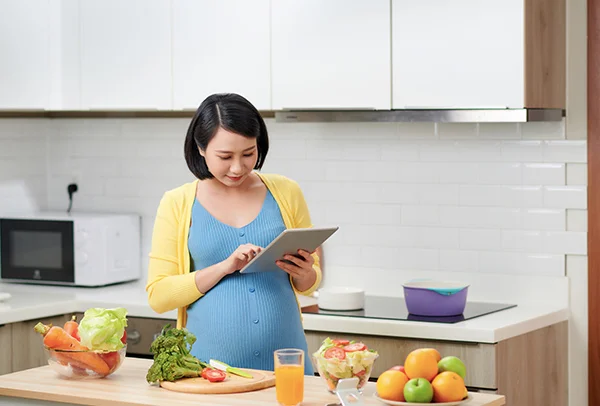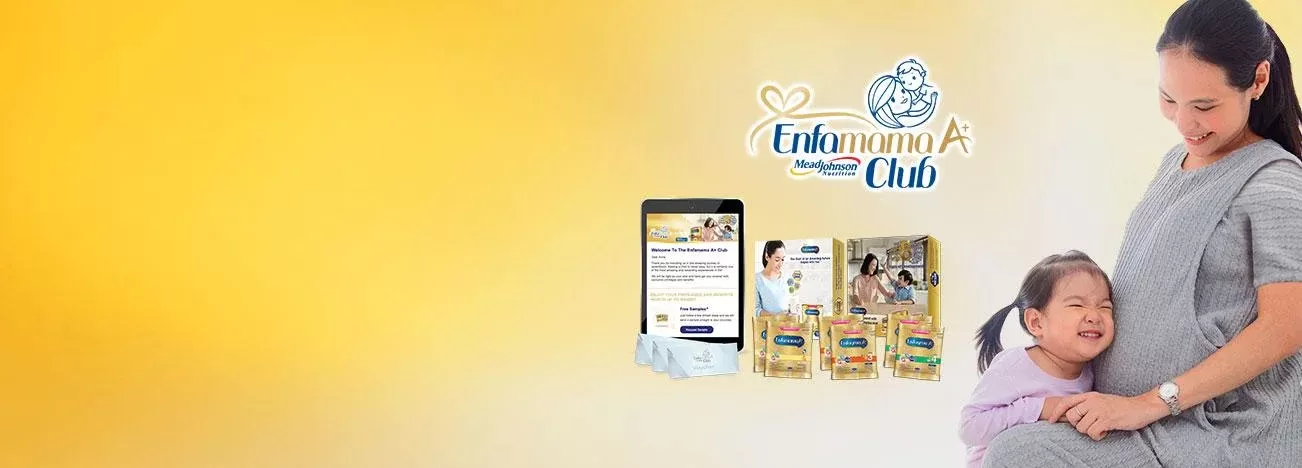
After months of anticipation, you’re finally ready to give birth. But as your attention shifts to caring for your child, you also need to take a well-deserved break. Here are the few things you should plan for as you go into confinement preparation, specifically your diet and nutrition which are pivotal aspects of confinement food.
Confinement Preparation in Malaysia
Confinement or the postnatal period is a critical time for moms to recover. Apart from the months you spent growing another human inside you, going into labour is exhausting—an estimate of 100 calories are burned per hour.1 In traditional Asian culture, confinement aims to restore the balance in body elements.2 You can start by making a solid diet plan of confinement food during confinement preparation. It’ll help you recuperate your health and give you the energy to meet the demands of motherhood.
Make use of confinement preparation to know your nutrition needs, and what you need to add to the grocery list
Confinement Preparation Tip #1: How Much Should I Eat?
Confinement period is usually marked by confinement food restrictions. But don’t let food add to your stress either. It’s all about well-balanced meals. Most new moms need to consume 1,800 to 2,200 healthy food calories each day.3
The number of calorie intake is also affected by age, body mass index, and current lifestyle. It’s best to talk to your doctor during confinement preparation to determine the right amount.
Confinement Preparation Tip #2: What Do I Eat?
Just like prenatal care, postpartum nutrition is equally important.4 Research shows that nutrient depletion during pregnancy can actually increase postpartum depression risk.5 During confinement preparation, create a nutrient-dense, anti-inflammatory confinement food diet. Here’s a breakdown:6,7
Calcium: During pregnancy, calcium was drawn from maternal bone resorption to support the foetal growth hence it needs to be replenished all the time. Moreover, getting enough calcium as part of confinement preparation minimizes the risk of osteoporosis. Good sources of calcium include soy milk, yogurt, leafy greens, and natural cheese.
Iron:You’ll lose a lot of blood during labour and this nutrient will help replenish blood cells. Poultry and plant food like beans and tofu are rich in iron and important additions in your confinement food planning.
Vitamin B12: B12 is necessary for proper red blood cells regeneration, DNA formation, and energy production.8 Vitamin B12 can be found in fortified cereals, and animal products such as tuna, beef, and salmon which can all be added into your confinement preparation plan.
Omega 3’s: These essential fatty acids have anti-inflammatory properties.9 Include walnuts, chia seeds, and fatty fish, such as salmon and sardines into your confinement food diet plan.
Fluids: Drinking plenty of water helps carry out toxins throughout the body. Moreover, it helps reduce swelling after delivery. Fluid intake is increased to 3.8 liters during lactation.
Confinement Preparation Tip #3: How To Lose Pregnancy Weight?
Confinement also aims to restore your body back to its original size and state pre-pregnancy. In most Malay communities, postnatal rituals are observed to achieve this10. But with modernization, some of these are not followed in confinement preparation anymore. The best thing to do is to consume a balanced confinement food meal plan and exercise when you’re allowed by your doctor already. Don’t worry because you’re bound to lose at least 20 pounds after labour11.
Confinement Preparation Tip #4: What Food Should I Avoid?
Traditionally, most Asian moms in confinement are to avoid “cooling food” such as cucumber, tomatoes, and coconut milk, as to not upset the balance12. However, these are not scientifically proven. During confinement preparation, it’s also important to note food items you should limit or avoid. These include:3
Caffeine: This can be found in most coffee and tea drinks, as well as carbonated drinks. Limit your intake to less than 24 oz a day.
Alcohol: In general, alcohol intake is not recommended.
Fish: Swordfish, king mackerel, and shark contain high levels of mercury which should be avoided.
Given that you just spent nine to 10 months growing a human being, you also need to look after yourself. As you go to confinement preparation, always include a nutrition plan to nourish yourself back to health with proper confinement food and consult your doctor for advice.
REFERENCES:
1. Effect of Dates in Late Pregnancy on the Duration of Labor in Nulliparous Women (2017). Retrieved July 15, 2020 from:
https://www.ncbi.nlm.nih.gov/pmc/articles/PMC5637148/
2. Belief and Practices of Traditional Post Partum Care Among a Rural Community in Penang Malaysia (2010). Retrieved July 9, 2020, from:
https://print.ispub.com/api/0/ispub-article/4210
3. New Mom’s Guide to Nutrition After Childbirth (n.d.). Retrieved 1 August 2020 from:
https://www.webmd.com/parenting/baby/nutrition-guide-new-moms#1
4. Postpartum Maternal Health Care in the United States: A Critical Review (2006). Retrieved July 9, 2020, from:
https://www.ncbi.nlm.nih.gov/pmc/articles/PMC1595301/
5. Nutritional Factors Affecting Postpartum Depression. JCCP Journal of Clinical Chiropractic Pediatrics, 12(1), 849-860 (2011). Retrieved July 16, 2020 from:
http://jccponline.com/jccp_v12_n1.pdf
6. WIC Postpartum Nutrition Modules 1&2 (2012). Retrieved July 16, 2020 from:
https://www.oregon.gov/oha/ph/HealthyPeopleFamilies/wic/Documents/modules/postpartum/postpartum-companion.pdf
7. Module 5 – Nutrition and the Postpartum Period (n.d). Retrieved July 16, 2020 from:
http://depts.washington.edu/pwdlearn/firststeps/pdfs/mod5print.pdf
8. Vitamin B12 Fact Sheet for Health Professionals (Updated March 30, 2020). Retrieved August 1, 2020 from:
https://ods.od.nih.gov/factsheets/VitaminB12-HealthProfessional/
9. Anti-inflammatory Effects of Omega-3 Polyunsaturated Fatty Acids and Soluble Epoxide Hydrolase Inhibitors in Angiotensin-II Dependent Hypertension J Cardiovasc Pharmacol, 62(3): 285–297.(September 2013). Retrieved August 1,from:
https://www.ncbi.nlm.nih.gov/pmc/articles/PMC3773051/
10. Postnatal Care Practices among the Malays, Chinese and Indians: A Comparison (2018). Retrieved July 8, 2020 from:
https://www.shs-conferences.org/articles/shsconf/pdf/2018/06/shsconf_iclk2018_05002.pdf
11. Nutrition and Exercise (n.d). Retrieved July 17, 2020 from:
https://www.urmc.rochester.edu/ob-gyn/obstetrics/after-delivery/nutrition-exercise.aspx
12. Confinement Food in Chinese, Malay and Indian Cultures (n.d). Retrieved July 10, 2020, from:
https://www.healthxchange.sg/women/post-pregnancy/confinement-food-chinese-malay-indian





